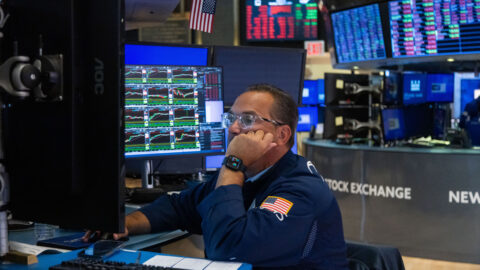The term “sustainability” can be found in the 2019 annual reports of all 20 ATX companies – and usually more often than terms like “profit” or “efficiency”. What the reference to sustainability means specifically is not always clear. “Sustainable” is being used as a synonym for “durable” or “with a long-term perspective”; it serves as alternative term for “circular economic activity” and as paraphrase of responsible economic activity, which is internalising the consequences of corporate decisions for the environment and society. Occasionally, it also refers to the Brundtlandt concept, which focuses on intergenerational solidarity.
Semantic vagueness
The semantic vagueness reflects conceptional deficiencies. They are based on the fact that the sustainable approach is an amalgam that aims at solving moral, micro-, and macro-economic problems at the same time. However, possible inconsistencies and the lack of understanding of how these problems can be solved are not taken into account. There is no consensus – neither scientifically let alone politically – on what macro goals like social justice – and, further down the line – a reduction of poverty, fair wages, and solidarity mean in concrete terms or what sort of corporate action should be derived from them.
Even in the environmental arena, i.e. the actual source of the concept of sustainability, there is less agreement than seemingly exact ratings suggest. One prime example is nuclear power, which is considered unacceptable in Austria, but which has found support in many other countries even from environmentally conscious energy politicians.
A negative consequence of the terminological vagueness is the fact that there are often massive discrepancies between the ESG ratings of the various agencies in this field – both with regard to what is being measured and how it is being measured. [1]
Risk of industrial ossification
Some of the requirements for being deemed a “good” company in sustainability ratings are derived from a partial analytical approach, which is untenable from a macro-economic point of view. For example, companies that cut their workforce in one major move receive generally a negative ESG-score. But, while companies with a volatile employment policy are not exactly prime investment targets, factory shutdowns and the resulting reduction of the labour force can never be fully ruled out and are often crucial for the long-term survival of the competitive core of the company.
Also, the requirement to pay so-called living wages that occasionally can be found in criteria-catalogues introduced by church-affiliated investors is short-sighted. The large-scale implementation of this policy would probably result in a situation where low-wage sectors that are likely to move abroad in the long run hold on longer than would be economically justifiable, which would not be in line with an industry structure geared towards sustainability and wealth creation.
Sustainability – a static equilibrium concept[2]
The sustainability approach shows significant similarities to the neoclassical equilibrium model of the economy, especially when it is interpreted as the goal of establishing a “circular economy”. However, equilibrium concepts posit numerous questions. For example, whether such equilibria are attainable, how stable they are, and whether there might be a multitude of equilibria that differ in terms of their welfare properties. In the field of macro-economics, Keynesianism has postulated the possibility of stable equilibria despite the presence of underutilised resources. In a similar vein, it is likely that several circular economic models may exist that differ in terms of their welfare features. In that case, it would not just be a technocratic question to be answered by rating systems, but a political one as to which of these models is to be deemed desirable.
Sustainable centrally planned economy?
Many catalogues of criteria that have been compiled to steer the economy towards sustainability are characterised by their focus on technical relationships and, therefore, harbour numerous weaknesses of centrally planned economies (e.g. the Green Taxonomy of the EU that came into effect in 2020) [3]. Such lists tend to be inflexible, static, and detrimental to innovation, and they rarely make allowances for the trade-offs that characterise actual investment decisions. Typically, big incumbents tend to benefit more compared to new, smaller competitors. [4]
Conclusion
The concept of sustainable investment addresses justified concerns. Social preferences, politico-economic priorities, and – derived thereof – the inflow into investment funds suggest that the trend towards sustainability is in fact sustainable. There are massive external effects on many levels that are not adequately priced in or that are not internalised on the basis of regulatory intervention.
It is thus even more important to put the concept of sustainability on a solid intellectual base. It took even the traditional investment theory – from Graham-Dodd’s value approach to the development of modern portfolio theory (Markowitz) up to the concept of factor investing (Fama-French), to name just a few milestones – decades to turn ideas, criticism, and their synthesis into a body of thought suitable to fill textbooks and useful in the practice of investing.
As for the sustainability approach – this process will hardly be any speedier due to its complexity and much like with the traditional investment theory, it will probably end up in a variety of competing schools of thought.
[1] Berg, Florian, Kölbel, Julian and Rigobon, Roberto, Aggregate Confusion: The Divergence of ESG Ratings (May 17, 2020). Available at SSRN: https://ssrn.com/abstract=3438533
Gibson, Rajna, Krueger, Philipp and Schmidt, Peter Steffen, ESG Rating Disagreement and Stock Returns (December 22, 2019). Swiss Finance Institute Research Paper No. 19-67, European Corporate Governance Institute – Finance Working Paper No. 651/2020, Available at SSRN: https://ssrn.com/abstract=3433728
Li, Feifei and Polychronopoulos, Ari What a Difference an ESG Ratings Provider Makes! (January 2020), https://www.researchaffiliates.com/en_us/publications/articles/what-a-difference-an-esg-ratings-provider-makes.html
[2] See also Book, Joakim (March 18, 2019), The Nonsensical Meaning of Sustainability, https://notesonliberty.com/2019/03/18/the-nonsensical-meaning-of-sustainability/
[3] https://eur-lex.europa.eu/legal-content/EN/TXT/?uri=CELEX:32020R0852
[4] For a critique of the EU Taxonomy, see e.g. Caldecott, Ben (Jun 14, 2019), ‘Encourages laziness and disincentives ambition’: Ben Caldecott shares his thoughts on the EU’s green taxonomy, https://www.responsible-investor.com/articles/encourages-laziness-and-disincentives-ambition-ben-caldecott-shares-his-tho
Legal note:
Prognoses are no reliable indicator for future performance.
Legal disclaimer
This document is an advertisement. Unless indicated otherwise, source: Erste Asset Management GmbH. The language of communication of the sales offices is German and the languages of communication of the Management Company also include English.
The prospectus for UCITS funds (including any amendments) is prepared and published in accordance with the provisions of the InvFG 2011 as amended. Information for Investors pursuant to § 21 AIFMG is prepared for the alternative investment funds (AIF) administered by Erste Asset Management GmbH pursuant to the provisions of the AIFMG in conjunction with the InvFG 2011.
The currently valid versions of the prospectus, the Information for Investors pursuant to § 21 AIFMG, and the key information document can be found on the website www.erste-am.com under “Mandatory publications” and can be obtained free of charge by interested investors at the offices of the Management Company and at the offices of the depositary bank. The exact date of the most recent publication of the prospectus, the languages in which the fund prospectus or the Information for Investors pursuant to Art 21 AIFMG and the key information document are available, and any other locations where the documents can be obtained are indicated on the website www.erste-am.com. A summary of the investor rights is available in German and English on the website www.erste-am.com/investor-rights and can also be obtained from the Management Company.
The Management Company can decide to suspend the provisions it has taken for the sale of unit certificates in other countries in accordance with the regulatory requirements.
Note: You are about to purchase a product that may be difficult to understand. We recommend that you read the indicated fund documents before making an investment decision. In addition to the locations listed above, you can obtain these documents free of charge at the offices of the referring Sparkassen bank and the offices of Erste Bank der oesterreichischen Sparkassen AG. You can also access these documents electronically at www.erste-am.com.
Our analyses and conclusions are general in nature and do not take into account the individual characteristics of our investors in terms of earnings, taxation, experience and knowledge, investment objective, financial position, capacity for loss, and risk tolerance. Past performance is not a reliable indicator of the future performance of a fund.
Please note: Investments in securities entail risks in addition to the opportunities presented here. The value of units and their earnings can rise and fall. Changes in exchange rates can also have a positive or negative effect on the value of an investment. For this reason, you may receive less than your originally invested amount when you redeem your units. Persons who are interested in purchasing units in investment funds are advised to read the current fund prospectus(es) and the Information for Investors pursuant to § 21 AIFMG, especially the risk notices they contain, before making an investment decision. If the fund currency is different than the investor’s home currency, changes in the relevant exchange rate can positively or negatively influence the value of the investment and the amount of the costs associated with the fund in the home currency.
We are not permitted to directly or indirectly offer, sell, transfer, or deliver this financial product to natural or legal persons whose place of residence or domicile is located in a country where this is legally prohibited. In this case, we may not provide any product information, either.
Please consult the corresponding information in the fund prospectus and the Information for Investors pursuant to § 21 AIFMG for restrictions on the sale of the fund to American or Russian citizens.
It is expressly noted that this communication does not provide any investment recommendations, but only expresses our current market assessment. Thus, this communication is not a substitute for investment advice.
This document does not represent a sales activity of the Management Company and therefore may not be construed as an offer for the purchase or sale of financial or investment instruments.
Erste Asset Management GmbH is affiliated with the Erste Bank and austrian Sparkassen banks.
Please also read the “Information about us and our securities services” published by your bank.



